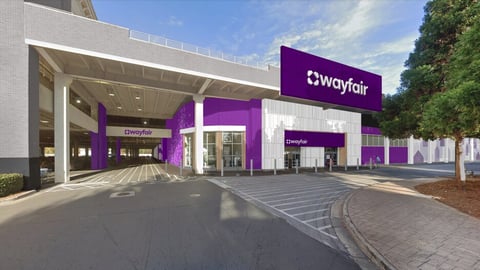EXCLUSIVE Q&A: Fiona Tan, CTO, Wayfair
Wayfair sees personalized, streamlined customer interaction as key to retaining and attracting customers.
Chain Store Age met with Fiona Tan, CTO of digitally native home furnishings giant Wayfair, at the recent Shoptalk 2025 conference in Las Vegas to discuss topics including the new Wayfair Verified program, tariffs, and the next big thing in retail technology.
Tan was named a Woman of the Year at the 2023 Chain Store Age Retail’s Top Women Awards event.
How would you describe Wayfair Verified?
This is a program that we feel will really be helpful to our customers. Wayfair has a fast selection, but at the same time, we wanted to be able to curate a smaller set of items that we would actually go and physically audit, and we might be putting it together so we would audit the assembly.
Verified will be across different price points and more small styles. We hope that this will be helpful to our customers and they can say, 'Look, Wayfair stands behind these items.' It’s an extra stamp of approval from Wayfair.
[READ MORE: Wayfair launches ‘Verified' program highlighting its ‘most-trusted’ products]
There’s a whole process around it, in terms of selecting the items and then from a technology perspective, it's how do we showcase the Verified program on our on our site and our customer journey, so that it becomes easier for customers to use it as a way to help curate and find items for them.
How is Wayfair affected by tariffs or by the prospect of tariffs?
Wayfair been working for some time now to diversify our supply chain. The furniture industry has had tariffs already, so we have dealt the issue, and part of that has been some degree of diversifying.
What are Wayfair’s technology priorities for the next 12 months?
Wayfair is still focused on creating a seamless shopping journey for our customers. For our category, it's all about search and discovery. Sometimes it's hard for the customer because they don't know how to describe the products they're looking for.
We will look at enabling a better understanding of customer intent as they’re shopping. It could include a visual search function allowing customers to have more expansive, conversational queries but then also be able to incorporate things they see.
We have also come up with a new shopping inspiration agent called 'Muse.' Customers can see a room style and generated imagery for their room. There are many different styles shoppers can then interrogate and say, ‘I like this one, can I see more like it, or perhaps in a different style?’
Muse lets us provide customers a way to be inspired as they're shopping for their home and at the same time allow them to curate or personalize and find result sets that matter to them, which is going to be different than what matters to other shoppers. It lets Wayfair ‘shrink’ the catalog, the selection, just for one shopper.
What do you see as the top retail technology trends for the next 12 months?
Retailers will take a multi-modality perspective. Meaning not just being able to have text exchanges with large language models, but being able to incorporate imagery, video, and voice.
How can retailers evolve their customer experience with this capability? We've all been trained by Google to look for something online as a keyword search.
It will also be interesting to see what happens with AI agents, which can now reason and take action. When it comes to e-commerce, there could be more and more shopping agents. A customer could say, ‘I want to make dinner tomorrow night. These are recipes I'm interested in.’
The agent could then figure out the items at once and if the customer allowed it, place the order for them and have it delivered to their home. That’s something that we're also thinking about.




